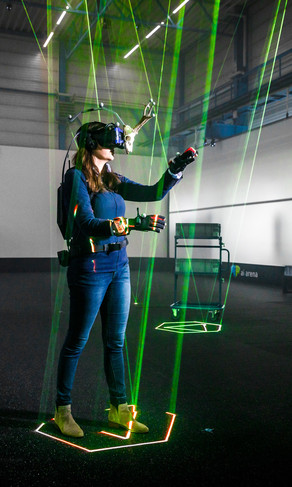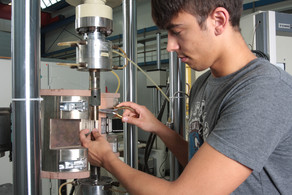Modeling and Simulation in Mechanics
he focus of modelling and simulation is the development of new physical-mathematical models that accurately and adequately represent real materials, structures and technological processes. Numerical simulations based on such adequate models provide realistic predictions about the actual behaviour of technical systems and materials used. Based on this, it is possible, for example, to replace numerous crash tests in automotive engineering with corresponding computer simulations. Another typical application example, for which both structural-mechanical properties of the product itself and the specific material properties are of central importance, is the simulation of manufacturing processes in forming technology. Here, existing simulation methods sometimes prove to be inefficient or unsuitable in relation to newly developed models. This motivates the need for improvements to existing simulation methods as well as the development of new ones.
Modelling and simulation thus make a decisive contribution to predicting the behaviour of structures and materials, but also the properties of products to be manufactured, to optimising them before their realisation, and thus to reducing the share of the usually cost-intensive "trial and error" approach in the development of new products and processes. The basic challenge is therefore to develop an appropriate physical model (modelling), to convert this into a mathematical model and finally to solve the latter by means of a suitable numerical procedure (simulation). The simulation result should then be compared with a real experiment, component or process (verification of the model) and it should also be investigated whether the model can also be transferred to other experiments and components (validation). In addition, structures and materials that have not yet been produced in this form can also be investigated on the basis of modelling and simulation. This is an essential building block for developing new innovative functional materials.
The profile consists of a compulsory as well as an elective part. For more detailed descriptions of the selectable modules, please refer to the Module Handbook Master in Mechanical Engineering.
Competences and job profiles
The typical areas of activity for engineers with a sound basic knowledge of modelling and simulation are:
- Research and development as well as the field of calculation,
- design and optimisation
- Consulting
- Interdisciplinary areas that go beyond mechanical engineering and classical engineering sciences







![[Translate to English:] [Translate to English:]](/storages/zentraler_bilderpool/_processed_/c/6/csm_Internationale_Studierende_aus_Ecuador_aae423f6a4.jpg)
![[Translate to English:] [Translate to English:]](/storages/zentraler_bilderpool/_processed_/f/5/csm_Audimax_Vorlesung-2_d01b012610.jpg)